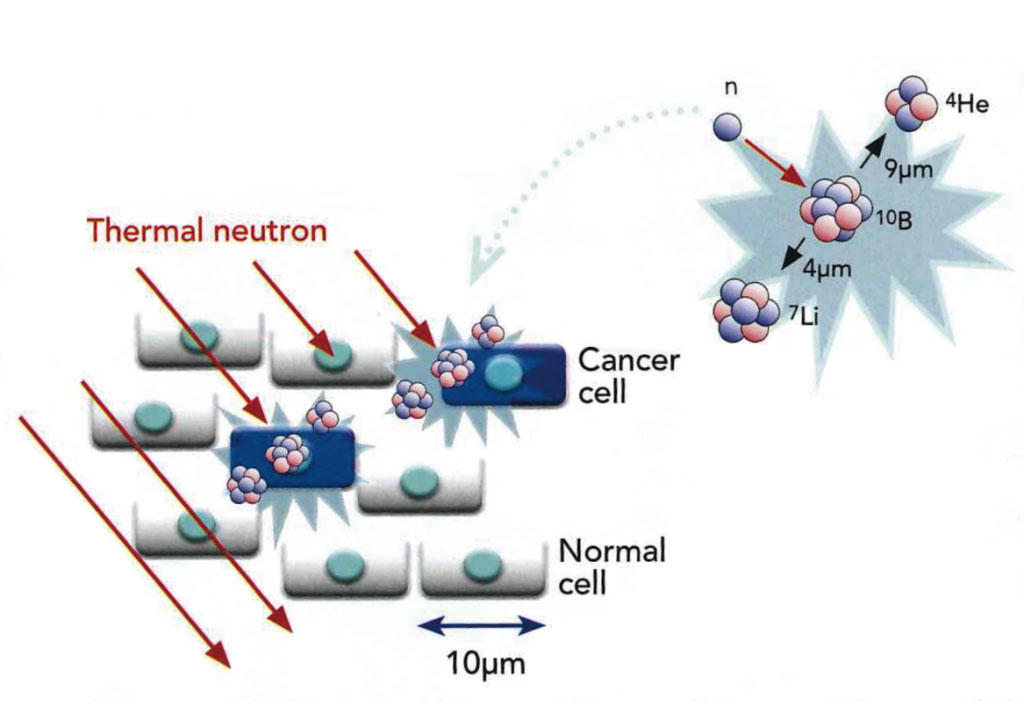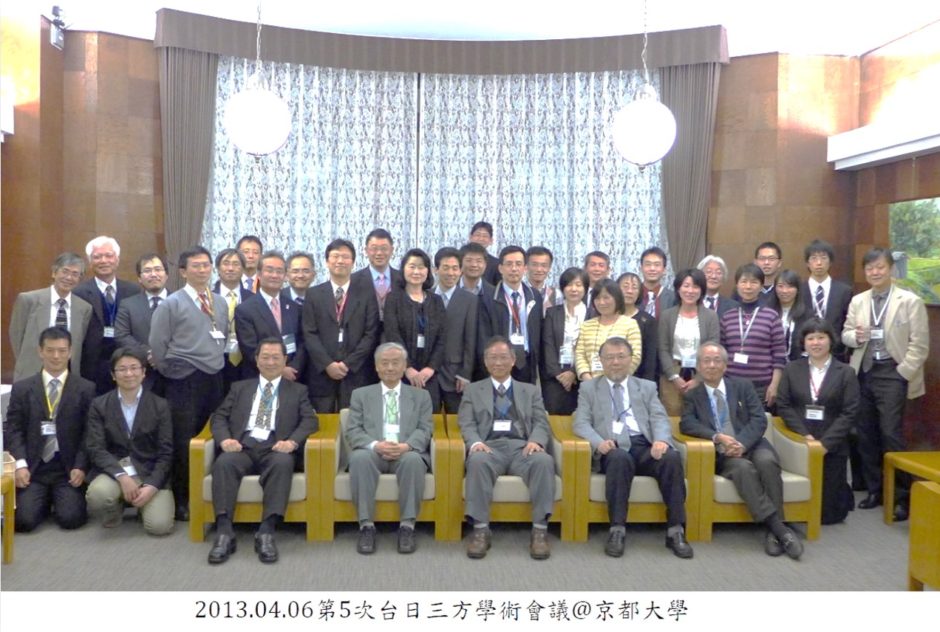What is Boron Neutron Capture Therapy (BNCT)?
Most people are familiar with “photons” and “protons”, but one rarely hears about “boron neutron capture”. In nuclear reactors, the control rod that controls the reaction rate plays an indispensable role in nuclear power generation. Early studies indicated that a non-radioactive isotope of boron, “boron-10”, is an excellent neutron absorber with a broad absorption spectrum that can block the nuclear fission chain reaction. Hence, materials like boron steel and boron carbide that contain “boron-10” are commonly found in control rods.
The “boron-10”-related study was first published in 1935 in “Nature” by H. J. Taylor, who found that the nuclear fission occurring after the absorption of thermal neutrons by boron-10 generates the “α-particle” (4He) and the recoiling lithium (7Li) with high linear energy transfer (LET).
The fission reaction of “boron-10” generates two types of biologically destructive radiation particles that are instrumental in destroying the DNA structure of cancer cells. These particles have very short emission ranges (9 μm and 5 μm, respectively), that do not exceed the diameter of a single cancer cell (10-20 μm).
Currently, BNCT is the most precise method of radiotherapy available in the field of medical radiation.

The “THOR” reactor of National Tsing Hua University provides the epithermal neutron sources
An effective neutron radiation source is another key element in BNCT that requires neutron beams with sufficient energy and flux in order to penetrate human tissue and provide an effective radiation for the cancer cells situated deep within the body. Such a radiation source is still mostly achieved by using an atomic reactor.
Currently, countries like the USA, Sweden, Finland, Netherlands, Czech Republic, Japan and Argentina have carried out clinical studies and treatment of BNCT using neutron radiation sources generated by atomic reactors, while smaller BNCT studies using similar radiation sources have been tried to carry out in countries like Italy, South Korea, and China.
In Taiwan, National Tsing Hua University has a reactor that meets world standards, the Tsing Hua Open-pool Reactor,
whose abbreviation, THOR, coincidentally refers to Norse mythology.
More than 20 years ago, the Nuclear Science & Technology Development Center (NSTDC) of National Tsing Hua University first decided to use the THOR in biomedicine. The construction of the neutron beam required for BNCT was initiated in 2000. The quality of the neutron beams generated by the THOR has been verified by international experts to ensure that it meets the high standards required for BNCT. NSTDC stated that patients with brain tumors had to undergo craniotomy in the past to achieve the same results as BNCT because the technology of neutron sources required for BNCT was not yet well developed. However, technological breakthroughs in nuclear engineering in recent years have enabled the majority of reactors to provide high-energy neutron beams. Currently, the THOR in National Tsing Hua University is capable of producing epithermal neutron beams that are able to reach cancer cells that grow deep inside the body.
However, environmental and safety considerations pertaining to nuclear energy make it impossible for gigantic reactors to be installed in hospitals. Hence, several cyclotrons have been designed in Japan that produces neutrons through collisions with different targets after proton acceleration. The director of Particle Radiation Oncology Research Center of Kyoto University, Ono Koji, has almost completed accelerator-based BNCT clinical trials that is expected to become the future trend of neutron sourcing for BNCT.
Clinical trials carried out by Taipei Veterans General Hospital A total of 6 patients with recurrent cancers have shown a complete response
BNCT was first used in clinical trials for the treatment of malignant Glioblastoma Multiforme (GBM), which is a complicated type of cancer with a recurrence rate close to 100%, due to its high specificity and tumor suppressor effects.
Since the 1980s, many countries has begun to develop BNCT for application in medical oncology. In the past 30 years, the Kyoto University Research Reactor Institute has studied nearly 1,000 cases of clinical treatment for cancers including malignant brain tumors, recurrent head and neck cancer, melanoma skin cancer, liver cancer, and lung cancer. BNCT showed good treatment outcomes in majority of the cases.
On August 11, 2010, BNCT clinical trials for cancer treatment using the THOR were performed in Taiwan for the first time. The clinical studies were led by the Head of Department of Oncology in Taipei Veterans General Hospital, Dr. Sang-Hue Yen, and participants included several physicians, physicists, and medical care personnel.
The first phase of the clinical trials was completed in 2014. It involved 17 patients with recurrent head and neck cancers that could no longer be treated by other therapeutic methods. The patients received BNCT treatment with each patient receiving only two radiation sessions with an interval of one-month.
The treatment outcomes were extremely exciting. Out of the 17, 6 patients have been clinically declared to have shown a complete response to the tumors, while the condition and quality of life of most of the remaining patients also improved significantly. Only 2% of the patients failed to respond and will be intensively investigated in future studies.
CONTACT ADDRESS
TSNCT Office:
No. 201, Section 2, Shipai Road, Beitou District, Taipei City 11217, Taiwan, R.O.C.
Taiwan Society of Neutron Capture Therapy c/o Dept. of Heavy Particles and Radiation Oncology, Taipei Veterans General Hospital
CONTACT
Email:service@tsnct.org.tw
TEL: +886-2-28757270 # 246
